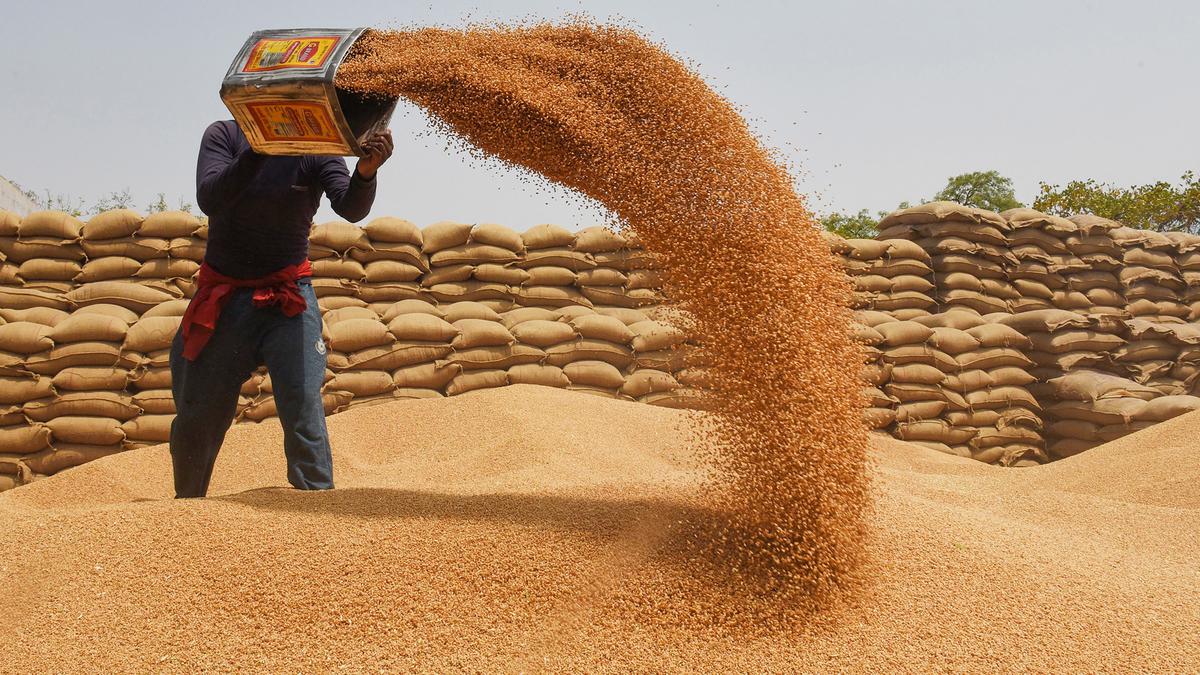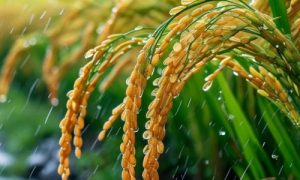Govt aims 60 pc of wheat area under climate resilient varieties in rabi season amid El Nino fear

The Centre aims to bring 60% of 30 million hectares of wheat area under climate-resistant varieties for the rabi season. Despite climate challenges, a record wheat output target of 114 million tonnes is set. Heat-resistant wheat varieties promoted amid changing climate patterns. Agriculture Secretary urges states to prepare for climate variations. Over 800 climate-resistant varieties available. Focus on narrowing yield gap in pulses and promoting balanced fertiliser use, including nano urea and DAP.
New Delhi, Sep 26 (PTI) Ahead of rabi sowing from next month, the Centre on Tuesday said it targets to bring 60 per cent of the total wheat area of 30 million hectare under the climate-resistant varieties amid strong El Nino conditions.
Despite the challenges of climate change, the Union Agriculture Ministry has kept a target of achieving a record wheat output of 114 million tonne in the 2023-24 rabi season against the actual output of 112.74 million tonne in the year-ago period.
Sowing of wheat, the main rabi (winter) crop, begins in October, while harvesting starts in March/April.
Addressing a national conference held to chalk out a strategy for sowing rabi (winter) crops, Agriculture Secretary Manoj Ahuja said: “There are certain changes in climate change, which is affecting agriculture. Our strategy is climate resilient seeds”.
Faced with a heatwave in 2021, the government encouraged farmers in 2022 to go for heat-tolerant wheat varieties in 47 per cent of the total wheat acreage of 30 million hectares.
“We are targetting to increase the coverage of area under heat-tolerant wheat varieties to 60 per cent this year,” Ahuja told PTI on the sidelines of the event and urged states to push farmers to grow heat-resistant varieties.
While addressing the event, the secretary said more than 800 climate-resistant varieties are available in the country. These seeds need to be put in the seed chain as part of the seed rolling plan.
“As a strategy, I request all states to identify specific areas and map varieties that can be sown,” he added.
Calling upon states to be prepared to tackle the changing climate patterns, the secretary said, “If the pattern of rainfall, temperature, variation keep changing, then it will affect the agriculture”.
“We have seen how rainfall patterns are changing. We had a deficit in June, a surplus in July, dry in August and again excess rainfall in September. As a result, there is a five per cent rainfall deficit in the country.”
There is also a severe deficit in reservoirs in Bihar, Andhra Pradesh, Tamil Nadu, Uttar Pradesh, West Bengal, Kerala and Karnataka compared to the 10-year average, he noted.
Taking into consideration the reservoir level and ground resources, Ahuja said the state governments should plan for the rabi season.
“There is still monsoon expected in October-November in certain states. IMD is still saying El Nino conditions are strong. They would be predicting, but I think you should be ready and states should keep this in mind while preparing for rabi season,” he added.
The secretary said the government is ready with a contingency plan for 450 villages. The ministry is working on a framework that will be rolled out across villages to make farmers understand the impact of climate change and how they respond.
He also asked states to focus on narrowing down the yield gap in pulses while also stressing the need to share accurate farm data for estimating foodgrains production.
Echoing concerns, Indian Council of Agricultural Research (ICAR) Director General Himanshu Pathak said the council has developed over 2,200 crop varieties, out of which 800 are climate resilient.
“Farmers will get immediate benefit if they use these seeds…My suggestion is to promote climate resilient varieties not only for wheat but also for other crops like rice and pulses,” Ahuja said.
He also suggested that farmers use biofortified crop varieties, balanced use of fertilisers, and precision farming.
Fertiliser Secretary Rajat Kumar Mishra said fertiliser is one crop input after water that influences production and stressed on balanced use of crop nutrients.
He also mentioned that nano urea and DAP fertilisers are going to be the future.














